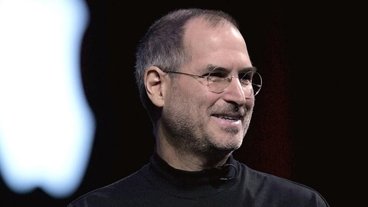Article Hero Image
![]()
Three of Apple's favorite journalists have weighed in on iPhone 3G and reckon the device to be a major — though not perfect — improvement on its predecessor. We break down the highlights of each review.
- iPhone 3G "is much, much faster at fetching data over cellphone networks" than the original version.
- Overall, the new phone "mostly keeps its promises."
- Surfing the net was typically between three and five times as fast on AT&T's 3G network. In Washington and New York, 3G speeds ranged between 200 and 500 kilobits per second compared to 70 and 150 kbps on EDGE.
- With 3G enabled, the iPhone 3G's battery drained much more quickly in a typical day of use than the battery on the original iPhone.
- Apple has greatly improved the iPhone's audio. The built in speaker is much louder for music and speakerphone conversations, but the phone produced an echo when used with the built-in Bluetooth system in Walt's car.
- Exchange ActiveSync works well and setup takes just minutes. Any changes made on the iPhone are reflected instantly in Microsoft Outlook. Email is also pushed to the phone instantly.
- While iPhone Software v2.0 allows for both personal and Exchange email accounts to function simultaneously, synching Exchange calendars and contacts will erase any personal calendars and contacts.
- A side benefit to 3G coverage is that it improves voice coverage: "At my neighborhood shopping center, where the first iPhone got little or no AT&T service, the iPhone 3G registered strong coverage."
- AT&T, however, still has spotty network coverage in major metropolitan areas: "In New York City, riding in a taxi along the Hudson, one important call was dropped three times on the new iPhone. Finally, I borrowed a cheap Verizon phone and got perfect reception."
- "No equal among consumer-oriented smartphones."
- Baig's corporate data (through Exchange) was a "relative cinch" to setup and works well.
- 3G isn't accessible in parts of northern New Jersey, highlighting the at times spotty coverage of the faster network.
- Most websites take 10 to 30 seconds to load through 3G, which is a lot faster than on EDGE (which often takes an extra 30 seconds or more).
- The phone feels "perfectly comfortable" in the hand courtesy of the plastic back.
- Apple confirms that the plastic should improve reception versus the original's aluminum.
- The journalist is "impressed" by the accuracy of GPS, but says the phone begs for voiced turn-by-turn directions.
- Audio quality is better overall, particularly the speakerphone; headphones are of course still better.
- Parental controls actually remove icons outright from the home screen; they don't just block access.
- You'll still want to charge the phone about once a day if used regularly.
- Old iPod accessories meant to charge over Firewire circuitry (such as a Belkin car kit) don't work; iPhone 3G still only recognizes USB.
- Overall: an "enthusiastic thumbs up."
- The "gracefully curved" back feels better in the hand than the original iPhone.
- Call quality takes a "gigantic leap forward" and is "crystal clear" on either end of the call; few other phones rival it.
- Apple: the GPS receiver's antenna is too small to replicate turn-by-turn navigation of a full unit.
- Like with most GPS devices, a 'canyon' effect from downtown buildings can block reception.
- Battery replacement will still cost $86.
- Examples of third-party apps: iCall for VoIP calls over Wi-Fi, G-Park for position-based parking, and Urbanspoon for picking a random nearby restaurant by shaking the phone.
 AppleInsider Staff
AppleInsider Staff










 William Gallagher
William Gallagher
 Wesley Hilliard
Wesley Hilliard
 Andrew Orr
Andrew Orr



 Amber Neely
Amber Neely







